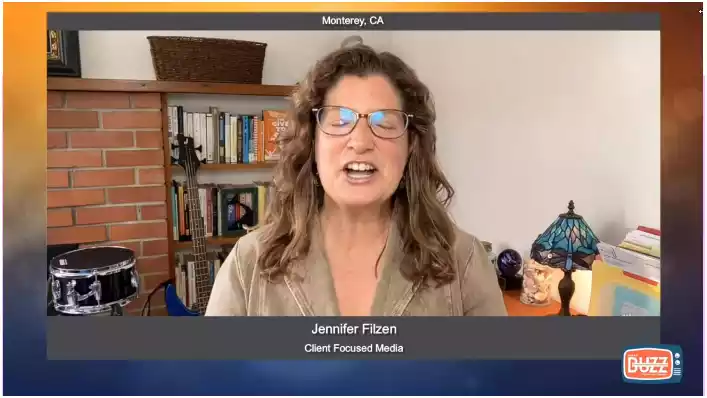Bridging Gaps in Care: The Impact of Prior Authorization Policy Enhancements
Unlock the potential of improved prior authorization policy enhancements to streamline healthcare processes and boost patient care. Explore the latest enhancements and their impact on efficiency and outcomes. Read more to discover how these changes can transform your practice.

For those asking about medical prior authorization, it refers to the process where healthcare providers must obtain approval from a patient’s insurance company before administering specific medical treatments, medications, or procedures. This step ensures that the proposed care is necessary and covered under the patient’s insurance plan, helping to control costs and avoid unnecessary treatments.
Let’s begin!
Table of Contents
Prior Authorization Policy Enhancements

Introducing Prior Authorization
Prior authorization is a term that patients frequently encounter during their healthcare journey, though its full implications may only sometimes be clear. This process involves obtaining approval from an insurer before receiving a service to ensure coverage. Originally designed to control costs for insurers and patients while prioritizing patient safety, navigating the approval process can be challenging.
Understanding the Significance of Prior Authorization
Definition and Objective
Prior authorization serves as a checkpoint in the healthcare system where insurance companies evaluate requests for services or medications before they are administered or prescribed. The idea behind this process is straightforward – it prevents expenses on treatments or drugs when viable alternatives are available and confirms that the recommended service or medication is genuinely needed.
Healthcare Cost Management
Prior authorization was initially implemented to save money. It allowed insurance companies to review services and prescribed medications from healthcare providers to ensure they were necessary before covering the costs. The aim was to cut expenses for treatments or drugs and maintain affordable insurance premiums for patients.
Role in Controlling Costs and Ensuring Patient Safety
This gatekeeping method plays a role. It helps control the rising costs of healthcare by preventing improper resource use while ensuring that patients only receive medically required interventions. Additionally, it aims to curb prescription drug misuse by requiring an evaluation before dispensing medications.
Challenges and Gaps in Prior Authorization
Despite its intentions, prior authorization can pose obstacles to healthcare delivery.
Lengthy Approval Process
Time is crucial in care. The prior authorization process often involves lengthy communication between providers and insurers. This back-and-forth can cause delays that may impact health.
Administrative Burden on Healthcare Providers
Healthcare professionals must deal with paperwork, phone calls, and documentation for authorizations, which divert their attention from direct patient care activities. The increased workload and frustration contribute to inefficiency in the healthcare system.
Delays in Providing Patient Care
A delay in the approval process can make a difference for patients, as it could mean they start treatment away or have to wait days or even weeks for necessary medical services or medications. These interruptions in care could worsen a patient’s health and lead to healthcare costs due to complications.
Enhancing Policies to Address Delays

Policymakers and insurers collaborate to make prior authorization (PA) processes more straightforward and faster. By reducing the required complexity and layers of approval, they aim to shorten waiting times for patients and healthcare providers.
Introducing Electronic Prior Authorization
Using technology, PA systems facilitate communication between healthcare provider offices and insurance companies. This immediate access and transparency can significantly reduce tasks and minimize delays.
Promoting Transparency and Communication
Establishing guidelines and criteria for PAs can help minimize communication loops. When providers understand the requirements, they can submit requests, enabling insurers to respond promptly and accurately.
I'm very thankful for Portiva who I know is looking after my practice while I'm gone the virtual assistants can manage prescription refills, documents they can triage patients and just kind of answer administrative questions and they can handle a lot on their own. But also, they're very good about contacting me if there's any emergency or anything I need to attend to. So I'm very thankful for Portiva they can help almost any provider almost anywhere and it really allows for some good work-life balance as I'm getting to experience right now at my family farm so I'm very thankful for Portiva and I'm very happy to use their services"

Board Certified Family Medicine Physician

Portiva's Virtual Medical Assistant - I have all the support I need. There's somebody checking my email, any patient messages. Patients are still able to schedule and handle any scheduling issues and any kind of billing that needs to still go through. Portiva hands handles it all for me. I have support i have somebody that I can access 24/7 pretty much. It's all very seamless. If somebody has an emergency or needs a medication called in. I know that the va's at portiva will handle that for me.

Board Certified Family Medicine Physician

Advantages of Policy Improvements

By simplifying the PA process and incorporating solutions, healthcare providers can redirect their efforts toward care. Spending time on tasks allows providers to concentrate on enhancing patient outcomes and delivering better overall quality of care. Moreover, a prior authorization (PA) process could reduce patient waiting times, resulting in increased satisfaction levels and enhanced patient loyalty.
Quicker Access to Essential Treatments
The inefficiencies of the PA process can mean that patients receive crucial treatments in urgent health situations. Policy improvements can significantly impact outcomes and quality of life by speeding up the treatment approval process. This also decreases the likelihood of complications. Worsening health conditions while awaiting approval.
Enhanced Patient Results
By expediting approvals and minimizing hurdles, patients experience improved health outcomes and better care, benefiting insurers, healthcare providers, and patients alike. Policy enhancements can prevent hospitalizations and costly medical interventions by eliminating barriers to treatments. This reduces strains on patients and healthcare systems while enhancing well-being.
Real Life Instances
Let’s examine a case study that illustrates the effects of PA policy enhancements. Following the implementation of an authorization system, a major healthcare provider noted a 75% reduction in medication approval processing time. This transition led to higher prescription fill rates, enhanced medication adherence, and increased patient contentment. In summary, the progress made in refining authorization regulations is a move towards simplifying healthcare management complexities. Their advantages are substantial, from improving efficiency to providing quicker and more dependable patient care. As these policy upgrades continue to develop, stakeholders must maintain the drive toward a healthcare system that prioritizes the time and well-being of patients above all else. We all have an interest in the success of these endeavors. Whether as healthcare professionals, patients, or policymakers. By collaborating and implementing strategies to revamp the authorization process, we edge closer to a healthcare system that saves costs and lives.
To learn more about authorization request that can enhance your medical practice. Discover more about Portiva and unlock a world of possibilities by visiting our homepage today!
- Assisting patients with prior authorization
- Prior authorization processes
- Managing patient rights in preauthorization processes
- Medical prior authorization policy changes
- Patient guide to navigating prior authorization
- True cost of prior authorization for patients and healthcare systems
- Challenges of implementing precertification services
- Strategies to incorporate prior authorization
- Optimize the use of prior authorization technology
- Accomplishing the efficient prior authorization
- Preauthorization guidelines for healthcare providers
- The implications of prior authorization on industry
- Enhancing private practices with outsourcing precertification
- Analyzing the impact of prior authorization procedures
- Importance of transparency in healthcare pre-approval
- Prior authorization in patient care services
- Why reviewing prior authorization policies is critical
- How prior authorization impacts patient outcomes

